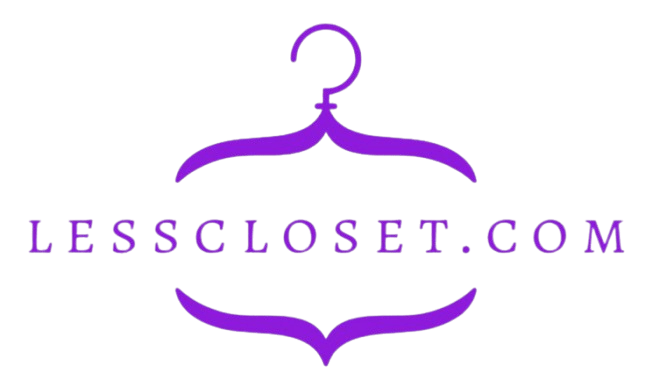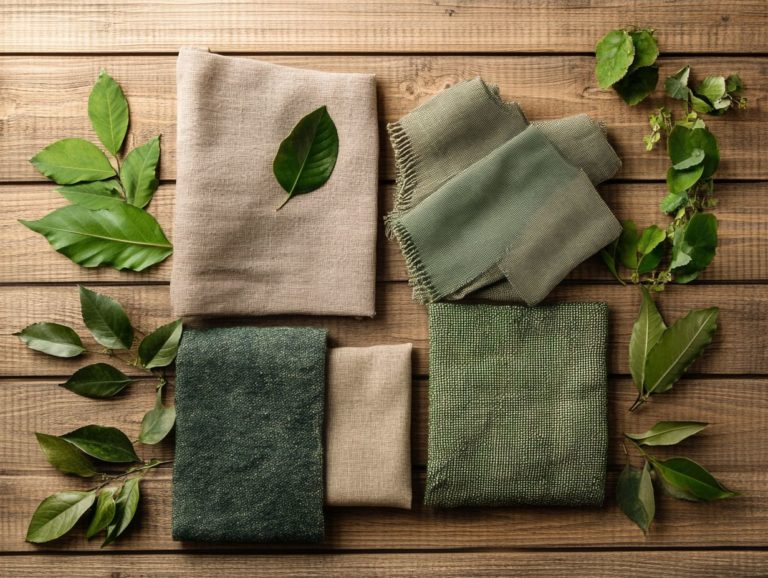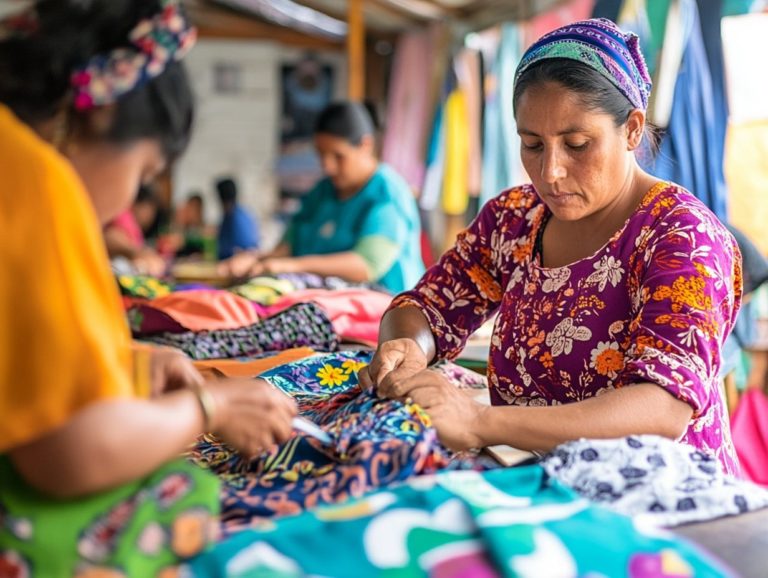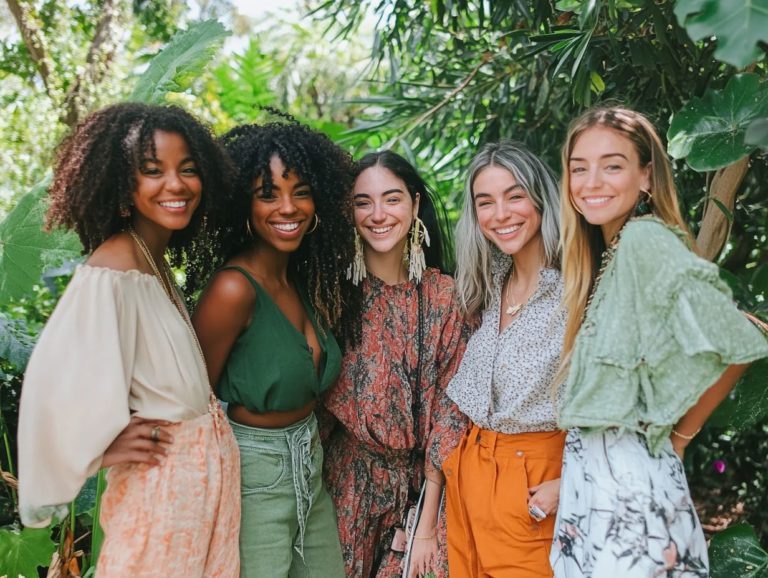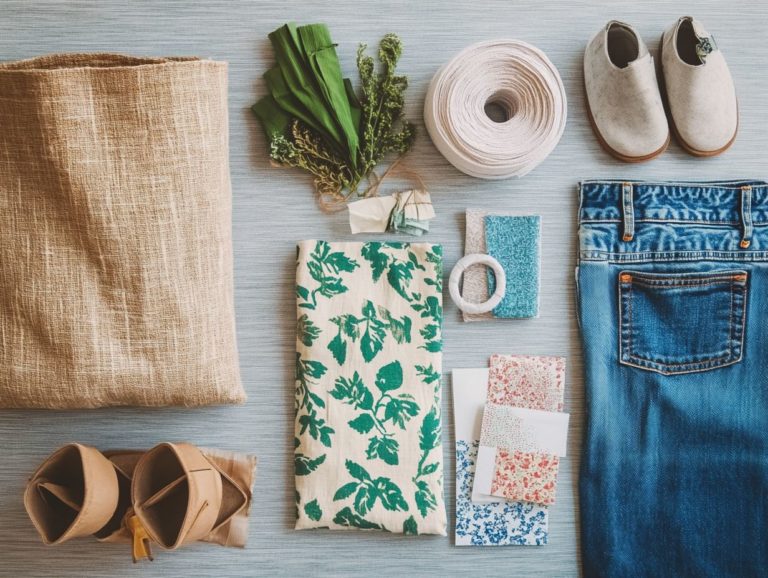5 Common Misconceptions About Sustainable Fashion
Sustainable fashion is often misunderstood. Many believe it is expensive or only for passionate environmentalists.
These myths can stop you from creating a more eco-friendly wardrobe.
This article will debunk five myths about sustainable fashion. We ll explore what it truly means, why it matters, and how you can embrace it stylishly without breaking the bank!
Contents
- Key Takeaways:
- 1. Sustainable Fashion Is Expensive
- 2. Sustainable Fashion Is Only for Environmentalists
- 3. Sustainable Fashion Is Not Stylish
- 4. Sustainable Fashion Is Limited in Options
- 5. Sustainable Fashion Is Not Accessible
- What Is Sustainable Fashion and Why Is It Important?
- Frequently Asked Questions
Key Takeaways:
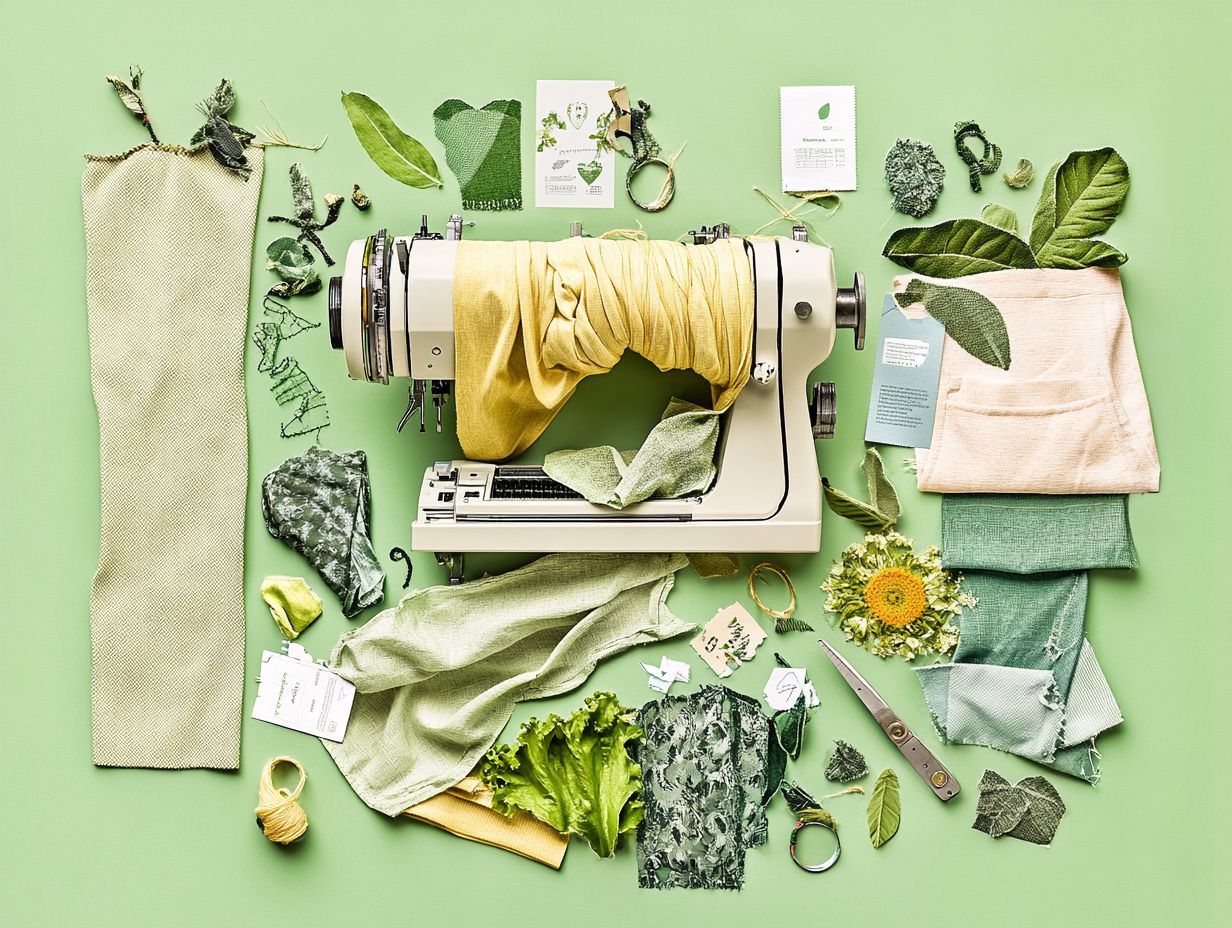
- Find affordable sustainable fashion options!
- Sustainable fashion is for everyone, not just environmentalists.
- Look great with stylish sustainable choices!
1. Sustainable Fashion Is Expensive
Sustainable fashion often gets a reputation for being expensive, mainly due to the higher costs associated with ethical production, environmentally friendly brands, and the use of sustainable materials. This perception overlooks the long-term benefits that sustainable fashion offers for both the environment and society.
By promoting responsible consumer behavior and supporting fair wages for garment workers, sustainable fashion creates a positive ripple effect.
Price tags for sustainable fashion pieces can be attributed to several key factors. First, the ethical sourcing of materials ensures fabrics are grown and harvested responsibly, which naturally drives up costs. Companies prioritizing fair labor practices adhere to stringent standards, resulting in higher wages and improved working conditions.
The use of eco-friendly materials can also be more costly than conventional textiles, but investing in sustainable fashion means investing in quality and durability. These items tend to outlast their fast-fashion counterparts, leading to a significant reduction in waste over time.
As you become more aware of your environmental impact, the value of sustainable options becomes clear, making them a savvy choice for eco-conscious shoppers.
2. Sustainable Fashion Is Only for Environmentalists
Sustainable fashion is often seen as a niche movement meant only for environmentalists, but it actually represents a broader commitment to social responsibility, ethical production, and consumer behaviors that resonate with individuals from all walks of life.
This misconception simplifies the diverse appeal of eco-friendly brands and the increasing demand for ethical fashion across various demographics.
Mainstream brands like Stella McCartney and Patagonia are integrating sustainable practices, reaching consumers who may not initially identify as environmentally focused. The conversation around fashion now includes vital social issues such as fair labor practices and inclusivity, inviting a wider audience to join in meaningful dialogue.
Today’s shoppers are more discerning than ever, often choosing clothing that aligns with their values. This shift in consumer awareness is evident as people prioritize quality, ethics, and storytelling in their purchases, sparking a cultural movement that encourages everyone to rethink their fashion choices.
3. Sustainable Fashion Is Not Stylish
The idea that sustainable fashion lacks style is a misconception that overlooks the remarkable innovation and creativity emerging from luxury and eco-conscious brands. These brands show that ethical fashion can be just as chic and sophisticated as traditional styles!
In today’s sustainable fashion landscape, you’ll find designers who prioritize style while remaining steadfast in their commitment to sustainable materials and ethical production practices.
As trends evolve, many brands are redefining luxury by infusing their collections with high-quality skill alongside environmentally friendly practices. Notable names in sustainable fashion, such as Stella McCartney and Eileen Fisher, exemplify how forward-thinking approaches can yield stunning designs that captivate fashion enthusiasts.
These designers are setting a new standard by seamlessly blending stylish silhouettes with innovative textiles like organic cotton, recycled polyester, and plant-based materials. By positioning sustainability as a fundamental aspect of high fashion, they challenge outdated notions and enable you to make choices that are not only visually appealing but also ethically sound.
4. Sustainable Fashion Is Limited in Options
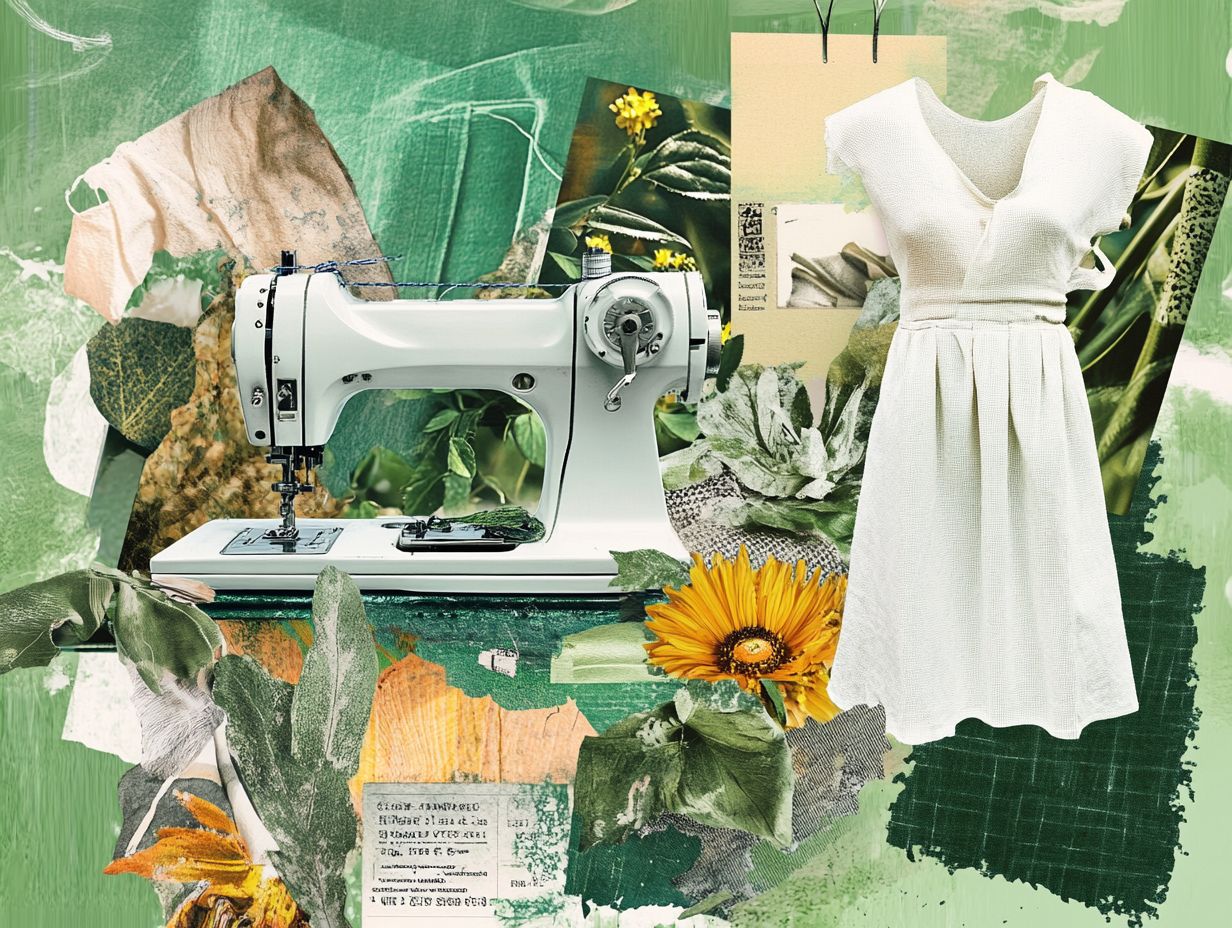
The idea that sustainable fashion is limited is outdated. Today, you have an impressive array of ethical fashion choices at your fingertips, from innovative eco-conscious brands to a flourishing secondhand clothing market.
This vibrant landscape offers unique and stylish sustainable alternatives to conventional shopping. You can embrace sustainable materials like bamboo and organic cotton without compromising on your personal style or variety.
Several forward-thinking labels now use innovative materials like recycled plastic and Tencel fabric, showcasing a commitment to both style and environmental consciousness. With functionalities that seamlessly blend fashion and sustainability, you can confidently curate a wardrobe that truly reflects your values and unique aesthetic.
5. Sustainable Fashion Is Not Accessible
Thinking sustainable fashion is out of reach ignores the exciting shift towards inclusivity in the industry. With initiatives addressing thrift store gentrification and offering affordable ethical options, sustainable clothing is becoming accessible to a broader audience.
You ll discover budget-friendly eco-conscious brands alongside community thrift shops that prioritize living wages for garment workers, making sustainable fashion steadily attainable for all.
Numerous organizations are dedicated to bridging the gap. Nonprofit thrift shops not only provide low-cost clothing but also educate shoppers about the environmental benefits of mindful consumption. Imagine community initiatives partnering with local artisans to craft unique pieces from upcycled materials, fostering both creativity and economic enablement.
Affordable brands are increasingly focused on transparency in their supply chain practices, allowing you to feel confident in your choices. This shift is beneficial not just for those on tighter budgets; it s paving the way for a culture that celebrates and embraces sustainable practices across a diverse spectrum of individuals.
What Is Sustainable Fashion and Why Is It Important?
Sustainable fashion embodies a transformative movement within the fashion industry. It is dedicated to creating clothing and accessories that prioritize ethical and environmentally responsible practices.
This initiative seeks to counteract the adverse effects of fast fashion, including rampant clothing waste and the exploitation of garment workers. By emphasizing sustainable materials and ethical production processes, sustainable fashion advocates for both environmental conservation and social responsibility. To explore this further, check out 5 stylish ways to wear sustainable fabrics, paving the way for a more equitable and eco-conscious future for consumers and producers alike.
This approach encourages a holistic perspective on fashion. It inspires you to engage in mindful consumption, where each purchase reflects your personal values. Key principles include:
- Use of organic or recycled materials
- Minimizing carbon footprints through local production
- Ensuring fair labor practices throughout the supply chain
As the detrimental consequences of fast fashion become increasingly evident, spanning environmental degradation to labor abuses, the significance of sustainable alternatives is gaining momentum. By shifting your consumption habits toward these practices and exploring 5 ways to make your wardrobe more sustainable, you not only help preserve our planet’s resources but also raise awareness of the ethical implications tied to fashion choices. Ultimately, you’re contributing to a more sustainable industry.
How Can Sustainable Fashion Benefit the Environment?
Sustainable fashion offers remarkable advantages for the environment. Notably, it curbs the ecological footprint linked to conventional garment production. This involves innovative practices such as recycling polyester, embracing biodegradable materials, and using organic cotton all of which play a crucial role in reducing pollution and waste.
When you shift your purchasing habits toward sustainable choices, you actively help the fashion industry contribute to climate action and promote a healthier planet.
This transition addresses the staggering issue of textile waste over 92 million tons of which end up in landfills each year. It also significantly reduces carbon footprints. For instance, opting for organic cotton can cut water usage by up to 91% compared to traditional methods. Brands dedicated to sustainability frequently utilize eco-friendly dyes that minimize chemical runoff, protecting local water ecosystems. Incorporating 5 tips for sustainable minimalist fashion can further enhance these efforts.
By embracing circular fashion, which means reusing clothes through methods like rental and upcycling, you can support a model that conserves essential resources. This encourages a thoughtful re-evaluation of your buying habits, ultimately leading to a more sustainable future for all.
What Are the Different Aspects of Sustainable Fashion?
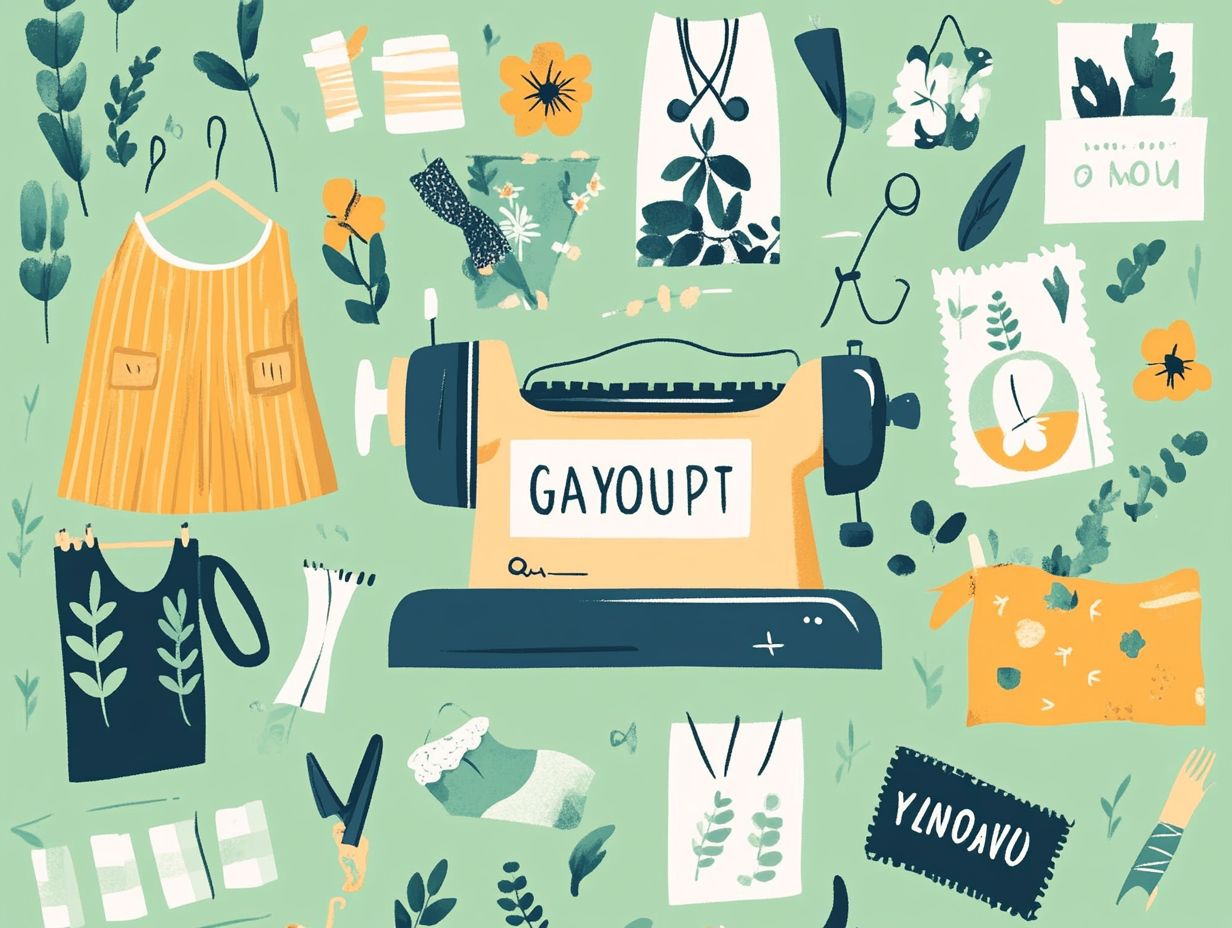
Sustainable fashion encompasses a range of important elements, including ethical production practices, the use of sustainable materials, and a strong commitment to social responsibility. Together, these aspects create a holistic approach to clothing that honors both the environment and the individuals involved in its creation.
Look for this commitment in luxury brands that prioritize sustainability alongside eco-conscious labels dedicated to fair labor practices each contributing to a more responsible fashion landscape.
Take Stella McCartney, for example. This brand sets a benchmark for ethical production by steering clear of leather and fur, thus reducing animal cruelty while championing sustainable sourcing. Patagonia is another shining example, celebrated for its dedication to using recycled materials and ensuring fair labor practices throughout its supply chain.
By embracing these methods, these brands not only bolster their own sustainability efforts but also inspire others in the industry to adopt similar values. This shift toward responsible manufacturing influences everything from resource conservation to community welfare.
Ultimately, it cultivates a culture that values both environmental stewardship and social equity. By engaging with these principles, you are participating in a movement that has far-reaching implications for the future of fashion.
How Can One Incorporate Sustainable Fashion into Their Wardrobe?
Incorporating sustainable fashion into your wardrobe is an exciting journey you can embark on with a few thoughtful strategies. Consider opting for secondhand clothing, selecting pieces crafted from organic cotton or bamboo, and supporting eco-conscious brands that prioritize ethical production. This is crucial for reducing clothing waste.
By making informed choices, you can significantly reduce your environmental impact while embracing a stylish and responsible lifestyle. Embrace this exciting journey without the stress!
When you shop, start by checking labels for certifications like Fair Trade or GOTS (Global Organic Textile Standard), which ensure sustainable practices.
Exploring local thrift stores is a brilliant way to save money while giving new life to pre-loved garments and combating fast fashion.
Adopting a one-in, one-out policy can help you maintain a curated collection while minimizing waste. By getting to know your clothes better and understanding their lifecycle, you contribute to a more sustainable future, making a lasting impact on both the environment and the fashion industry.
What Are Some Affordable Sustainable Fashion Brands?
Numerous affordable sustainable fashion brands have emerged, offering you eco-conscious options that don t compromise on style or ethics. This makes it easier than ever to embrace ethical fashion without emptying your wallet. These brands provide a diverse array of clothing made from sustainable materials like organic cotton and bamboo, ensuring quality at accessible price points.
By prioritizing ethical practices, they ensure fair wages and a living wage for their artisans, fostering a positive impact on communities. Their collections cater to various tastes and occasions, ranging from casual wear to professional attire.
You ll find price ranges starting around $30 for essential basics and reaching up to $150 for more intricate designs, demonstrating that sustainable choices can fit comfortably within your budget.
Supporting these brands not only champions environmental responsibility but also encourages the broader industry to adapt and innovate in sustainable practices, creating a ripple effect that benefits everyone involved.
What Are the Future Trends in Sustainable Fashion?
The future of sustainable fashion is on the brink of growth and innovation, with trends like increased recycling efforts, biodegradable materials, and a stronger emphasis on climate action emerging as consumers demand more responsible practices from the fashion industry, especially concerning consumer behavior.
This evolution is set to redefine your shopping habits and weave sustainability deeper into the fabric of fashion production and consumption.
Advancements in technology, like 3D printing and AI-driven design, are changing how we create clothes, minimizing waste while customizing products to fit your individual needs.
As the market shifts, influencers and brands are stepping up to showcase sustainable collections, raising awareness and encouraging eco-conscious spending in your choices. New initiatives like circular fashion models and rental services are popping up, highlighting a movement towards resource efficiency and addressing issues related to thrift store gentrification. Additionally, brands can explore 5 ways to go green to further their commitment to sustainability.
Ultimately, the momentum created by these trends showcases a holistic approach, allowing the industry to balance style with responsibility as it strides confidently toward a more sustainable future.
Frequently Asked Questions
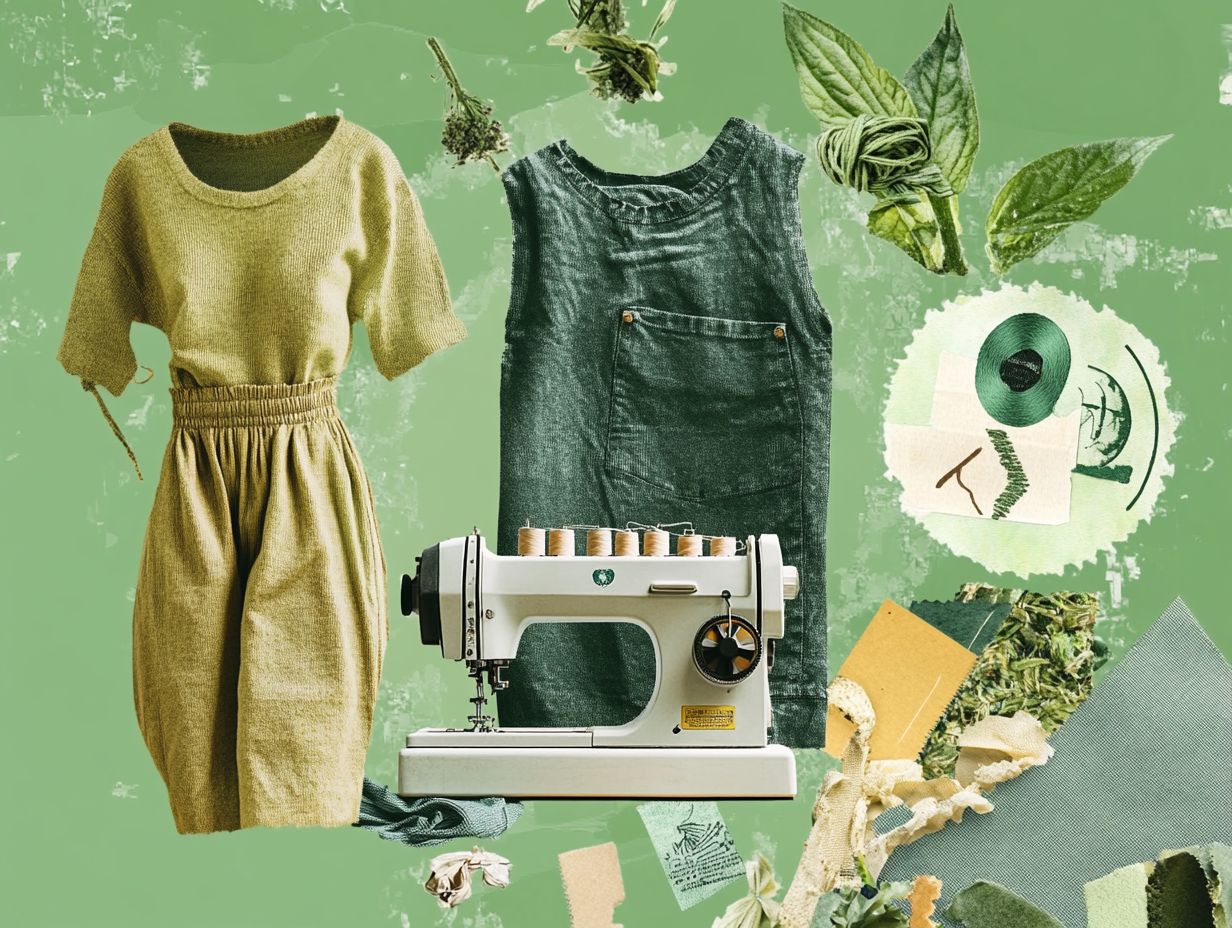
What is sustainable fashion?
Sustainable fashion is an approach that considers the environmental, social, and economic impact of clothing production and consumption. It aims to create a more ethical and environmentally friendly fashion industry.
What are the common misconceptions about sustainable fashion?
- It is only for high-end or luxury brands.
- It is too expensive.
- It is only about using natural materials.
- It is a passing trend.
- It is only for a certain demographic.
Is sustainable fashion only for high-end or luxury brands?
No, sustainable fashion is available at all price points. You can find many affordable options, not just from luxury brands.
Is sustainable fashion more expensive?
Some sustainable fashion brands may be pricier. However, many affordable options exist, making sustainable fashion an investment in the environment and the people who create our clothes.
Is sustainable fashion only about using natural materials?
Sustainable fashion includes using natural materials and many other practices. It also focuses on ethical labor, reducing waste, and promoting fair trade.
Is sustainable fashion just a passing trend?
Sustainable fashion isn’t just a trend; it’s a vital shift towards a more ethical and eco-friendly industry. As consumers, we are demanding more transparency and responsibility from brands.
